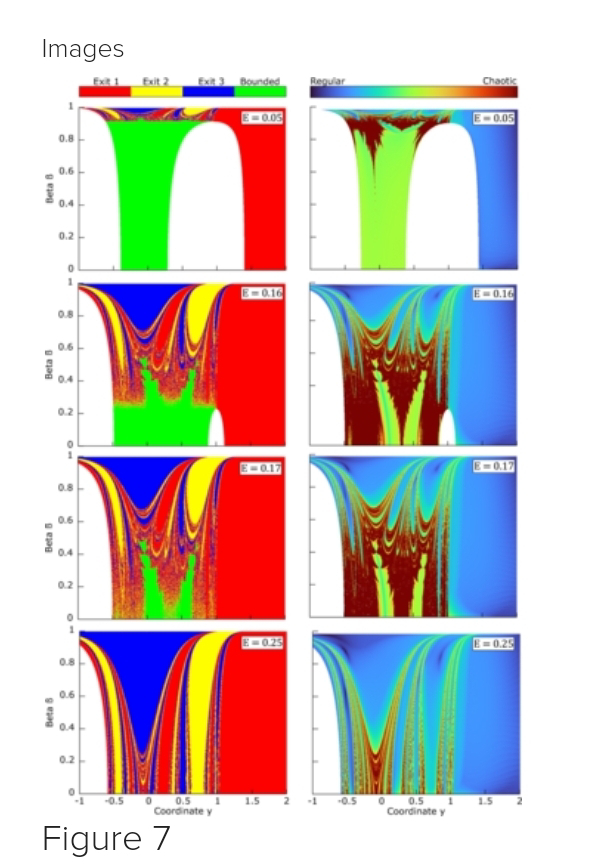Translate
lunedì 10 ottobre 2022
# gst: apropos of transitions, escape inside a noisy layered system
venerdì 18 ottobre 2024
# gst: isles of regularity (depending on the initial setup) in a sea of chaos amid the gravitational three-body problem.
martedì 23 aprile 2024
# gst: Lévy flights and Lévy walks under stochastic resetting.
sabato 13 settembre 2025
# gst: intensity landscapes in elliptic and oval billiards with a circular absorbing region.
giovedì 23 ottobre 2025
# gst: gigantic dynamical spreading and anomalous diffusion of jerky active particles.
martedì 21 maggio 2024
# gst: relativistic chaotic scattering, scaling laws for trapped trajectories.
lunedì 2 dicembre 2024
# gst: apropos of diffusive anomalies, anomalous diffusion of active Brownian particles in responsive elastic gels.
sabato 30 settembre 2023
# gst: wandering domains: a hypothetical scenario with bounded orbits.
mercoledì 18 marzo 2020
# life: Snake Plissken movies revisited, the chaotic escape from Milan, Paris, ...
lunedì 19 dicembre 2022
# gst: behavior of microswimmers in a vortex with translational and rotational noise
giovedì 15 febbraio 2018
# astro: we have to escape with a speed of 550 km/s
<< When a rocket is launched into space, it is thrown out with a speed of 11 km/s to overcome the Earth's gravitational pull [..] Our home galaxy, the Milky Way, is over a trillion times heavier than our tiny planet Earth so to escape its gravitational pull we have to launch with a speed of 550 km/s. >> Prajwal Kafle.
International Centre for Radio Astronomy Research. Milky Way ties with neighbor in galactic arms race. Feb 14, 2018.
https://m.phys.org/news/2018-02-milky-ties-neighbor-galactic-arms.html
FonT
intrigante il video che simula la collisione- fusione
sabato 18 ottobre 2025
# gst: apropos of waves that escape trapping; on internal wave whispering gallery modes in channels and critical-slope wave attractors.
martedì 11 luglio 2017
# s-astro: the sonic multiverse, by Gavin Starks
<< A project that explores whether there is a musical equivalent to the curvature of spacetime will be presented on Thursday 6 July by Gavin Starks at the National Astronomy Meeting at the University of Hull >>
AA << aim is to test whether mathematical relationships that describe cosmology and quantum mechanics can be applied to a sonic universe , or 'soniverse' >>
Royal Astronomical Society. Adventures in acoustic cosmology. July 6, 2017
https://m.phys.org/news/2017-07-adventures-acoustic-cosmology.html
Gavin Starks. Escape into the multiverse. Jan. 27, 2017
http://www.binarydust.org/2017/01/27/escape-into-the-multiverse/





